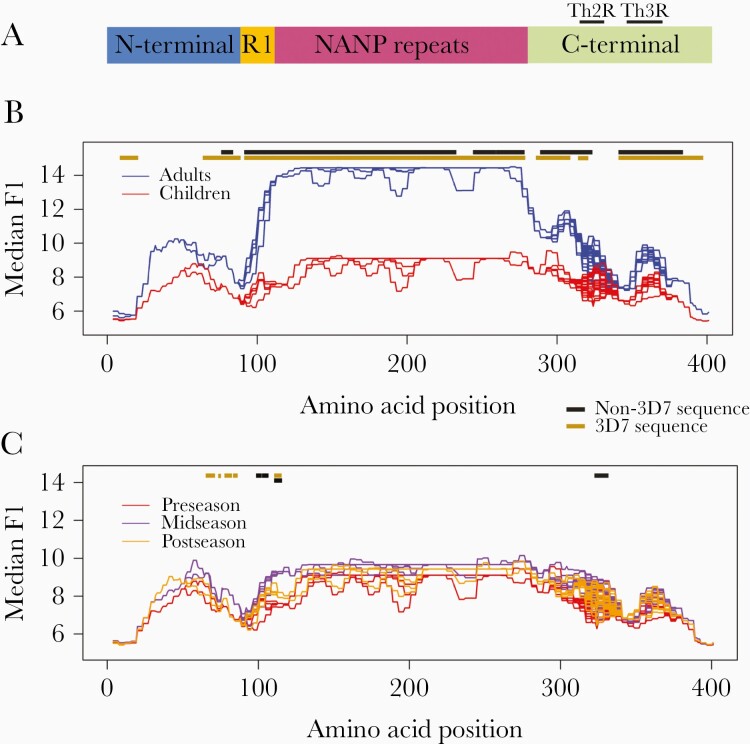Figure 1.
A, Schematic of the circumsporozoite protein (CSP). CSP is comprised of 4 regions: the amino- or N-terminus; Region I; the central repeat or NANP repeat region; and the carboxy- or C-terminus. For 3D7, the N-terminus spans from amino acids 1 to 93, Region I and the R1-central repeat junction span from amino acids 94 to 116, the central repeat region spans from amino acids 117 to 272, and the C-terminus spans from amino acids 273 to 397 (with Th2R at 310–327 and Th3R at 345–366) (positions based on 3D7 sequence) [7, 14, 15]. B, Seroreactivity in Malian adults vs children: The x-axis represents the amino acid position along the protein. Median smoothed log2 fluorescence intensity (FI) is displayed on the y-axis. Line graph shows the median smoothed log2 FI of adults (blue) compared to children (red) to 73 CSP haplotypes. Each line is the median smoothed log2 FI to a single CSP haplotype on the array, with overlap of lines in areas of sequence conservation. The gold line above the line graph shows where seroreactivity to the 3D7 variant was significantly greater in adults compared to children, and the black line represents areas to which seroreactivity to non-3D7 variants was significantly greater in adults compared to children (P < .05 with Benjamini–Hochberg [BH] correction). At no position along the protein did children have significantly greater seroreactivity than adults. C, Seroreactivity over the course of a malaria season in Malian children: The x-axis represents the amino acid position along the protein. Median smoothed log2 FI is displayed on the y-axis. Line graph shows the median smoothed log2 FI of children preseason (red) compared to mid-season (purple) and postseason (yellow) to 73 CSP haplotypes. Each line is the median smoothed log2 FI to a single CSP haplotype on the array, with overlap of lines in areas of sequence conservation. The gold line above the line graph shows where seroreactivity to the 3D7 variant was significantly greater in children midseason compared to preseason and the black line represents areas to which seroreactivity to the non-3D7 variants was significantly greater midseason compared to preseason (P < .05 with BH correction). No significant differences were found when comparing seroreactivity postseason to midseason or postseason to preseason.

